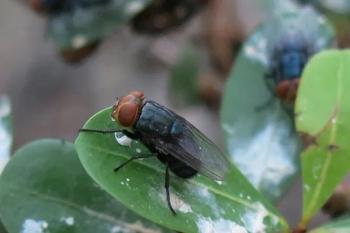
Giardia and genotypes–What does it all mean? (Proceedings)
Giardia is a protozoan parasite frequently detected in a wide variety of animals, including humans. Three major morphological groups are recognized: Giardia muris in mice, G. agilis in from amphibians, and a third group from various warm-blooded animals.
Giardia is a protozoan parasite frequently detected in a wide variety of animals, including humans. Three major morphological groups are recognized: Giardia muris in mice, G. agilis in from amphibians, and a third group from various warm-blooded animals. Included in this group are G. ardea and G. psittaci from birds, G. microti from muskrats and voles, and G. duodenalis (also called G. intestinalis and G. lamblia) from humans and other animals. Giardia duodenalis is further subdivided into genetic types or assemblages, based on molecular genetics. Eight assemblages are currenlty recognized, named A-H. Dogs are infected primarily with assemblage C and D and cats with assemblage F. Cloven-hoofed animals carry assemblage E, rats assemblage G, and H in seals. Humans are infected with assemblages A and B. However, other animals, including dogs and cats have also been reported carrying assemblage A or B; thus, these are considered to be of broad host-specificity and potentially zoonotic.
Giardia cysts are oval in shape and approximately 10 um in length. Trophozoites are pear-shaped, 9-21 x 5-15 um in size, and bilaterally symmetrical with a concave adhesive disc on the ventral surface. Two nuclei and 4 pairs of flagella are present. Although trophozoites can be present in feces, particularly if diarrheic, the cyst is the environmentally resistant stage that is primarily responsible for transmission. Infection occurs through ingestion of the cyst in contaminated water, food or other contaminated environments; trophozites excyst in the small intestine where they replicate by longitudinal binary fission. Cyst formation, then, occurs as parasites transit the colon and can be found in the feces in about 5-7 days after infection.
The reported prevalence in dogs and cats within the US varies according to the detection method used and has been reported as high as 15%. Giardia cysts do tend to be detected more often in younger animals than older animals and in shelter or kennel populations. However, detection rates among animals with or without diarrhea often are similar.
The most common clinical sign is diarrhea. However, animals can be infected without any clinical signs for months or years. Other animals may have bouts of diarrhea followed by quiescent periods. Still, others will have chronic diarrhea which lasts until the parasites are eliminated.
Molecular genetics have helped, in some ways, to clarify the zoonotic potential of Giardia from dogs and cats. Studies conducted over the last 13 years have indicated that dogs and cats are mostly (but not exclusively) infected with host-adapted parasites. Assemblages C and D are found in dogs and assemblage F is found in cats. These host-adapted assemblages tend to be the most common genetic types reported in the US in our pet population and, to date, these assemblages have not been identified in humans in the US. Rather, assemblages A and B are the types infecting humans. Dogs and cats come into the picture because some studies have identified low prevalences of assemblages A and B in them. Sub-typing of these strains is likely going to be necessary to further sort out their true zoonotic potential. It has been hypothesized that the genotypes detected in dogs and cats represent the prevailing assemblages in certain situations. Thus, dog- and cat-adapted assemblages might outcompete other assemblages in kennels/catteries or similar canine and feline environments; however, the reverse might occur in areas commonly contaminated with cysts from the feces of humans or other animals.
Unfortunately, very few studies to date provide meaningful data to assess the zoonotic potential of G. duodenalis from dogs and cats. Some studies have shown that the same assemblages can be found in samples from dogs, cats and humans living in close proximity. And, if zoonosis is defined as the identification of the same assemblages in animals and people, then, yes, there is zoonotic potential present in the Giardia present in dogs and cats. However, studies have suggested that independent transmission cycles may be occuring in people and pets in the same locality or that dogs are infected by ingesting cysts from human waste. Thus, the mere finding of the same genotypes in people and their pets may not be sufficient evidence of zoonosis. It is clear the data to date is insufficient to definitively determine whether the presence of the same gentoypes in humans and their pets represent a true zoonosis and the role of dogs and cats as a source of human giardiasis remains unresolved. Therefore, the potential role of dogs and cat in zoonotic transmission, although probably minor, cannot be conclusively elimiated.
Newsletter
From exam room tips to practice management insights, get trusted veterinary news delivered straight to your inbox—subscribe to dvm360.





